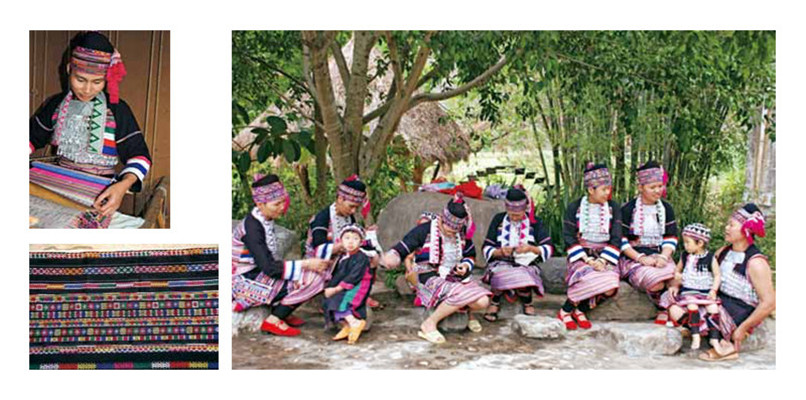Luo Meiying – Representative Inheritor of Dai Ethnic Costume-making Skill Project in Xinping County, Yuxi
Challenges in Preserving Dai Embroidery Culture
1. Decline in Interest Among Younger Generations
2. Economic Pressures
3. Lack of Public Awareness
4. Cultural Shifts
Efforts to Overcome Challenges

Strategies to Increase Awareness of Dai Embroidery
1. Education and Training Programs
-
School-Based Education: Introducing traditional Dai embroidery into school curricula can help cultivate interest among younger generations. This can be done through specialized courses, extracurricular activities, and workshops.
-
Community Workshops: Organizing regular workshops in local communities can attract both young and old, providing hands-on experience and fostering a sense of cultural pride.
2. Cultural Festivals and Exhibitions
-
Festivals: Hosting cultural festivals that feature Dai embroidery can attract a wide audience. These events can include live demonstrations, exhibitions, and sales of traditional embroidery products.
-
Exhibitions: Setting up exhibitions in museums, cultural centers, and other public spaces can showcase the history and techniques of Dai embroidery, educating the public about its cultural significance.
3. Media and Digital Platforms
-
Social Media Campaigns: Utilizing social media platforms to share stories, videos, and images of Dai embroidery can reach a broader audience. Highlighting the work of local artisans and the cultural significance of their craft can spark interest and support.
-
Online Tutorials and Courses: Offering online tutorials and courses can make learning Dai embroidery accessible to people who may not have the opportunity to attend in-person workshops.
4. Collaboration with Local Businesses and NGOs
-
Partnerships: Partnering with local businesses, NGOs, and cultural organizations can provide additional resources and support for promoting Dai embroidery. These collaborations can lead to joint projects, funding opportunities, and increased visibility.
-
Support Programs: Establishing support programs that provide financial assistance, training, and market access to artisans can help sustain the craft and encourage its development.
5. Government Support and Policy Initiatives
-
Policy Development: Governments can play a crucial role by developing policies that support the preservation and promotion of traditional crafts. This can include funding for training programs, tax incentives for artisans, and support for cultural events.
-
Public Awareness Campaigns: Launching public awareness campaigns through government channels can highlight the importance of traditional crafts and encourage public participation.
6. Incorporating Modern Design and Marketing
-
Innovative Design: Combining traditional Dai embroidery techniques with modern design can create products that appeal to contemporary tastes while preserving cultural heritage.
-
Marketing Strategies: Developing effective marketing strategies to promote Dai embroidery products can increase their marketability and reach a wider consumer base.
7. International Exposure
- Cultural Exchange Programs: Participating in international cultural exchange programs can showcase Dai embroidery on a global stage, attracting international interest and support.
- Export Opportunities: Exploring export opportunities for Dai embroidery products can not only provide economic benefits but also increase global awareness of this traditional craft.
For Chinese version please go to:
http://www.ynich.cn/view-ml-13111-3169.html













